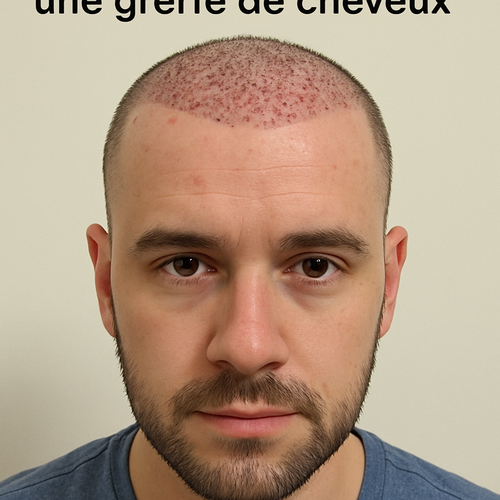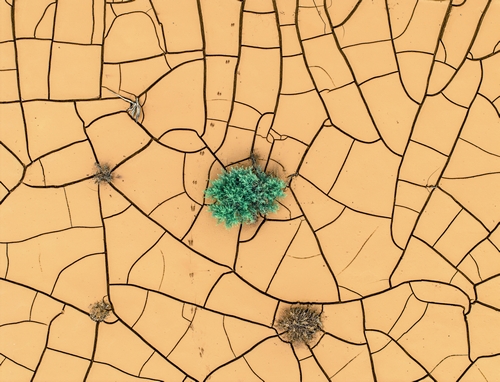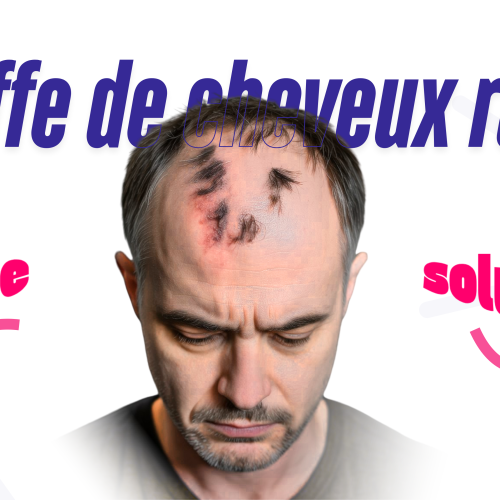
Hair transplant: month by month
Hair transplantation is a popular solution for combating baldness. While promising, this process requires patience and understanding. Each month brings its share of changes and developments.
In this article, we will explore the month-by-month evolution of a hair transplant. You will discover what to expect at each stage of the process.
From the initial healing to the final regrowth, each phase is crucial. Understanding these steps will help you better manage your expectations.
Understanding Hair Transplants and Their Progression
A hair transplant is a surgical procedure aimed at restoring hair to thinning or bald areas. Hair follicles are taken from a dense area and implanted elsewhere. This process can use different techniques such as FUE or FUT.
Every transplant follows a defined regrowth timeline. Understanding this timeline is essential to assess progress. Here are some key stages of the process:
- The initial healing phase
- The shedding of transplanted hair
- Progressive hair regrowth
- Achieving the final result
These stages represent a natural, gradual progression. Patience and commitment are essential for optimal results.
The First Weeks After the Transplant: Healing and Initial Care
The first weeks after a transplant are crucial for healing. It is vital to follow post-operative instructions. This includes gentle cleaning of the transplanted area.
Patients should watch for signs of infection. Mild redness and swelling are normal. These symptoms usually disappear within a few days.
Here are some essential recommendations:
- Avoid direct sun exposure.
- Refrain from intense physical activity.
- Do not touch or scratch the transplanted areas.
Taking prescribed medication helps speed up recovery. This initial care promotes healthy regrowth. Good scalp hygiene is also crucial.

Hair Transplant After 1 Month: Shock Loss
After one month, some patients notice shedding of transplanted hair. This phenomenon, known as "Shock Loss," is normal. The follicles are actually preparing for new growth.
Do not panic if you see hair falling out. This is a common stage and nothing to worry about. The follicles remain firmly in place.
During this period, it is essential to keep the scalp clean. Use gentle products to avoid irritating the area. Good hygiene supports the next growth phase.

Hair Transplant After 2 Months: Resting Phase
At two months post-transplant, hair often enters a resting phase. This stage can be frustrating as few visible changes occur. However, it is a key step in preparing for future regrowth.
Patience is required during this phase. Hair follicles are slowly strengthening. While the wait may seem long, it is a crucial part of the process.
Continue your regular scalp care. Avoid harsh hair treatments to protect the delicate follicles. Your patience will soon be rewarded with visible growth.

Hair Transplant After 3 Months: First Signs of Regrowth
At three months, the magic begins. The first tiny hairs appear. They are often fine and delicate at first.
These new hairs are an encouraging sign of the ongoing transplant process. While subtle, their presence indicates deep-rooted growth. Remember, this is the start of a gradual transformation.
Patients often notice an increase in hair density. At this stage, stick to the recommended care routine. Your efforts are starting to pay off.
Hair Transplant After 4 to 6 Months: Accelerated Regrowth
Between four and six months, you will see significant changes. Your transplanted hair begins to grow faster and thicken. Hair density visibly improves.
During this period, about 50% of the final results can be observed. Your new hairline appears more defined and natural. This is a key moment to approach your desired look.
Regular care remains essential. Here are some tips to optimize this phase:
- Continue to protect your hair from the sun.
- Use gentle hair products.
- Avoid harsh hair treatments.
At this stage, patience is still your ally.

Hair Transplant After 7 to 9 Months: Density and Visible Progress
At seven months, improvements become more noticeable. Hair density increases significantly. You start to see results close to your expectations.
By nine months, most transplanted hair has grown. Treated areas appear naturally full and even. The texture of the hair gradually matches the rest of your head.
During this period, continued follow-ups with your surgeon are recommended. This allows adjustments in care and ensures optimal hair health. Comparative photos reveal impressive changes.
Hair Transplant After 12 to 18 Months: Final Results and Maintenance
From 12 months onwards, your hair has reached its final appearance. You will notice optimal density and a natural look. The transplanted areas blend seamlessly with the rest.
After 18 months, it’s time to adopt regular maintenance. Follow these tips to keep your new hair healthy:
- Wash your hair with a gentle shampoo.
- Avoid excessive use of heated styling tools.
- See your surgeon for annual check-ups.
Before/after photos help appreciate the transformation. They illustrate the success of the procedure, boosting your satisfaction and confidence.
Tips to Optimize Regrowth and the Progress of Transplanted Hair
Maximize your results with proper care. Adopting a healthy lifestyle is crucial for hair regrowth.
Here are some strategies to follow:
- Eat a balanced diet rich in vitamins.
- Stay well hydrated.
- Avoid stress as much as possible.
By following these tips, you encourage healthy and lasting hair growth. Take care of your new hair to maintain its vitality and beauty.
Conclusion: Patience and Realistic Expectations
A hair transplant is a journey that requires patience. Final results take time to become visible.
It is crucial to have realistic expectations. Each stage of the process brings its own visible and tangible changes. Keep confidence in your progress and follow your doctor’s recommendations to achieve the desired success.
Hair Transplant: Month by Month
FAQ
Yes, this is completely normal. This is called Shock Loss, a natural phase where transplanted hair temporarily falls out before regrowing. The follicles remain in place.
The first signs of regrowth generally appear around the 3rd month. Density gradually increases up to 12–18 months.
The final result is visible between 12 and 18 months after the transplant. At this stage, the hair has regained its density and natural appearance.
Avoid sun exposure, intense physical effort, use a gentle shampoo, and strictly follow medical recommendations to promote healing and regrowth.
It may be helpful to have a follow-up consultation with the clinic or consider a touch-up if results are partial. Cases of unsatisfactory transplants are rare if the protocol has been properly followed.
Recent posts



